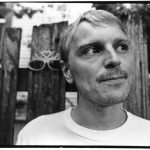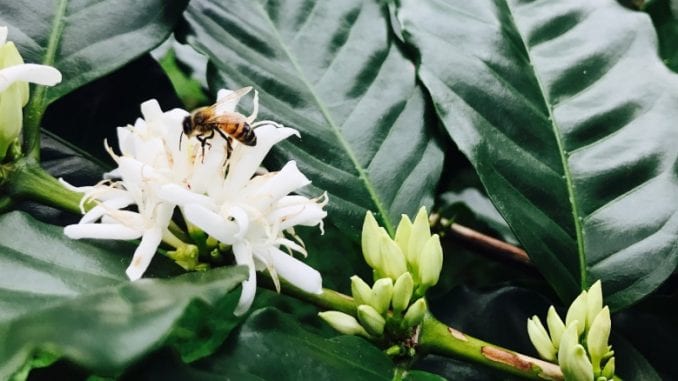
Last month, Barista Magazine Online launched the series “On an Island” exploring the enigmatic coffee origin of Hawaii. For stop number two on the Hawaii tour, we meet the little-known region of Maunawili.
BY CHRIS RYAN
BARISTA MAGAZINE ONLINE
(If you missed the first installment of the series, check it out here.)
When one thinks of Hawaiian coffee, the Big Island—particularly Kona—likely comes to mind. And that would make sense, as the area accounts for the vast majority of the state’s production. But several Hawaiian islands grow coffee, and each has its own story. Perhaps one of the most interesting stories comes from Maunawili, an 80-acre research farm located on the island of Oahu, near the city of Kailua. Though Oahu isn’t known for its coffee (it has about 175 acres of total production), Maunawili’s unique climate and status as a research hub for the local industry help it stand out in Hawaii’s coffee industry.
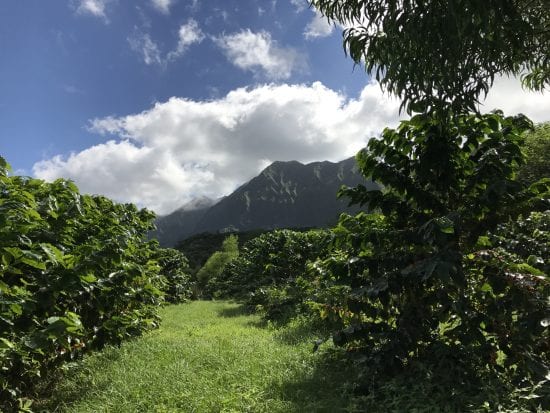
Maunawili, which translates to “twisted mountain,” has long been lauded for having climatic conditions beneficial to agricultural production. In the late 1920s, the Hawaiian Sugar Planters’ Association (HSPA) began research work at Maunawili to develop new sugarcane varieties for the U.S. sugar industry. In 1996 the HSPA changed its name to the Hawaii Agriculture Research Center (HARC), expanding its research focus to forestry, vegetable crops, tropical fruits, and, of course, coffee. Today, HARC uses Maunawili as an agroforestry research center, where it studies many of these crops. (It has one other research farm, Kunia, also located on Oahu).
When it comes to coffee, HARC uses some of its Maunawili acres as a breeding and testing site for new varieties, an educational facility where tourists and locals can learn about coffee, and a coffee farm producing an annual crop that the organization uses to supplement its income. (HARC is a nonprofit funded primarily by donations and grants.)
Unique conditions
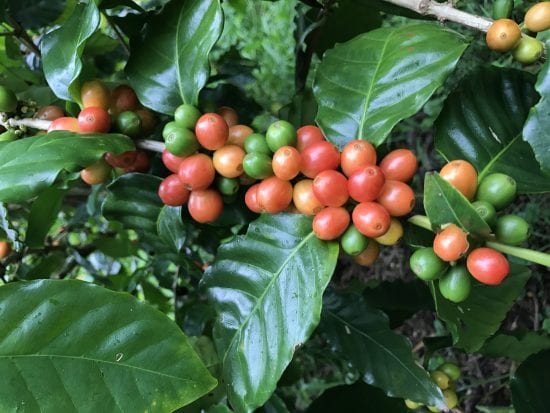
Judging Maunawili’s coffee at first glance would be to underestimate its quality potential. The coffee farm is located at about 500 feet elevation—thousands less than the 3,000-to-6,000-foot elevation at which most specialty coffee grows. But the area’s topography allows the coffee to defy expectations: The Olomana and Koolau mountain ranges surrounding the valley block out most sunlight during the day, creating cloud cover under which the plants sit and gather condensation. “Plants don’t know what elevation they’re at—they only know environmental signals,” says Juli Burden, a HARC research assistant who also works as a barista in Oahu. “Because of the shortened time that the plants get exposure to sunlight, they behave as if they’re at a higher elevation.” Juli says that the climatic conditions allow the cherries to mature slowly, resulting in a more complex cup than one would expect from low-elevation coffee. “It takes a lot of people by surprise who are familiar with the area how sweet and complex the coffee is,” she says. “We have a really special micro-climate here.”
Variety trials
Because this micro-climate performs similarly to the higher-altitude land where many local farmers grow coffee, HARC uses Maunawili to test coffee varieties and share this information with Hawaiian growers. The Hawaii State Coffee Trial in the mid-1980s set up trials across the state to select for plant health and cherry yields in different environments, planting everything from Typica (the most common variety in Hawaii) to Yellow and Red Caturra, Red and Pink Bourbon, and lesser-known varieties like Guadalupe. Maunawili was one of the facilities used for the trial, and its plants have stayed almost entirely intact. Working with researcher Shawn Steiman, the HARC team conducted a blind cupping of the varieties in the trial garden to identify best performance in the cup—“a little bit like a vineyard selecting the best grape variety,” Juli says.
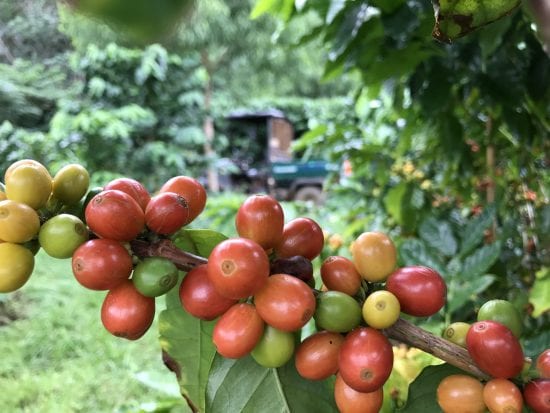
The team settled on Pink, Yellow, and Red Bourbon as the best-performing varieties at Maunawili. These, along with all the varieties from Maunawili’s garden, are available to local coffee farmers to take back to their farms to see how they perform. Additionally, armed with the information gleamed from the recent variety testing, Maunawili has planted several trees of Pink, Yellow, and Red Bourbon—along with the heralded SL-28 variety—in another orchard on the premises. Maunawili will sell this coffee to the local community, with varieties that are rarely seen in the area as a differentiator. “Those varieties alone really separate us from most of the coffee market in Hawaii,” Juli says.
Cultivating bio-diversity
While the specialty-coffee work being done at Maunawili is of great import to the Hawaiian coffee industry and its local growers, coffee is part of a bigger picture at Maunawili. Juli says Hawaii has the world’s highest rate of plant endemism; ninety percent of its plants have evolved in Hawaii and nowhere else. This makes for a delicate ecosystem, and much of HARC’s work is devoted to coaxing its plants to behave in harmony for the benefit of each other.
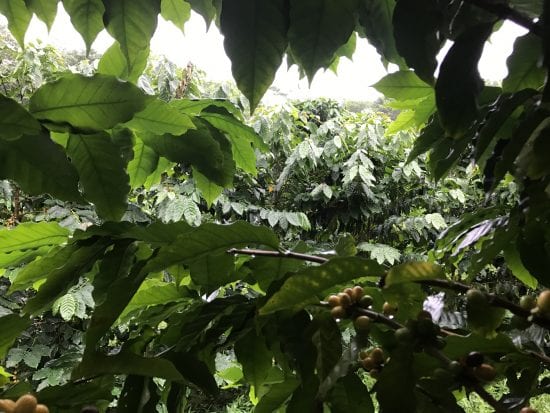
An area of focus for Maunawili is the Acacia koa tree (known locally as just koa), the second most common tree in Hawaii and one prized for its delicate wood. In addition to studying the koa species and promoting its health and sustainability, HARC is using koa as its main canopy crop at its coffee farms, and encouraging local growers to do the same to foster biodiversity on their farms. Miguel Meza, owner of Hawaiian exporting company Isla Custom Coffees, says he’s encouraged by what the adoption of this biodiversity could mean to the future of Hawaiian coffee. “The pairing of koa with coffee and creating an integrated farming environment is exciting,” says Miguel. “Our native koa seems to provide the perfect amount of shade for coffee, and coffee farms could be a great way for reforestation efforts in the future.”
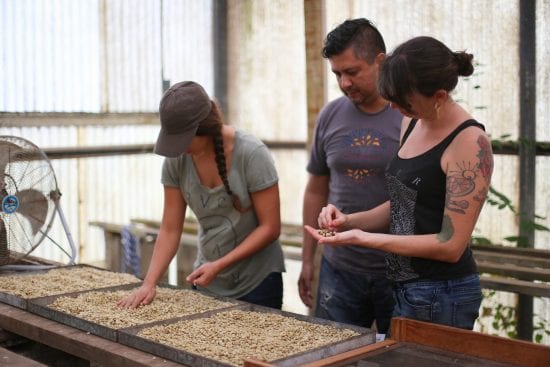
HARC is doing exciting work at Maunawili to encourage quality and sustainability among Hawaiian growers—and producing its own unique, exquisite coffee along the way. The organization has also provided training workshops, and is looking to expand this experience to other coffee businesses and their baristas in the future. “Hawaii is arguably the most accessible coffee-growing origin in the world,” Juli says. “I love what some cafes are doing with barista exchanges at origin, and I think Hawaii would be a great location to do that as well, with the right educational infrastructure and cafes. Because our orchards are small and well managed, I think baristas could get really great hands-on experience coffee farming here in Hawaii.”

